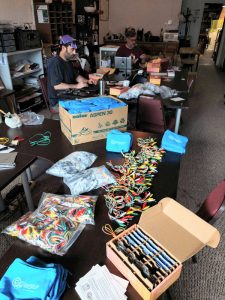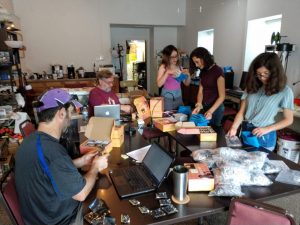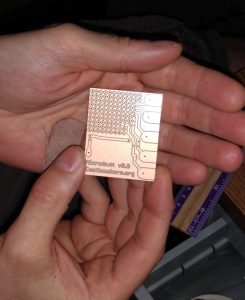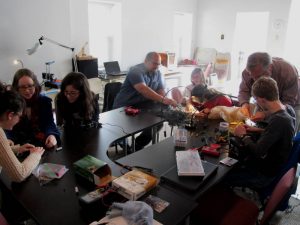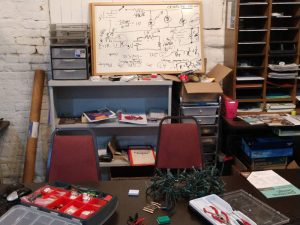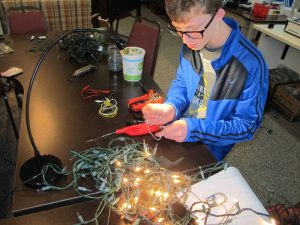With the Putnam County Microcomputer Initiative (PCMI) roll out and distributions, October has been a blur and our blog has fallen behind. A lot still happened, like Putt Putnam County and the PCPL annual Halloween party, but we’ll cover it in future blog posts.
The PCMI started in 2018 from internal discussions about the technology gap in rural communities and how to get more folks interested in technology and coding, especially youth. PCMI was born after seeing a demo of the BBC micro:bit at the 2018 Hackathon in Indy – it seemed like a potential solution! Thought why not put a simple-to-use single board computer, in this case a micro:bit, into the hands of Putnam County youth so they could learn and use them?
After researching the micro:bit further and writing a Techpoint Foundation for Youth grant to get 10 for first hand experience in our CoderDojo, we decided to use a variation of what was done in the United Kingdom. We would give them directly to all 6th graders in Putnam County. The device is already being used in some US school systems, including NYC’s Computer Science for All and some Project Lead the Way classes, but with Indiana’s computer science curriculum under revision we were hoping for a quicker jump start so folks could recognize the significance of physical computing and that it doesn’t have to be difficult!
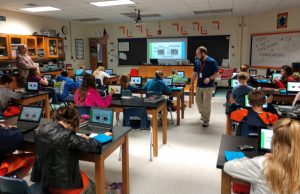
Luckily for us the Putnam County Community Foundation understood the importance and was willing to fund our idea. All four school systems were also willing to help – so we’ve been rolling out micro:bit kits to the 6th graders in Putnam County during October. Our last distribution, to home school kids at Putnam County Public Library, is on 11/4 and we’ll also be having a community session for parents and anyone else interested at Ivy Tech Community College in Greencastle on Monday November 4th at 6:30 pm. Seeing the excitement of the 6th graders getting and exploring their devices has been a real treat!
